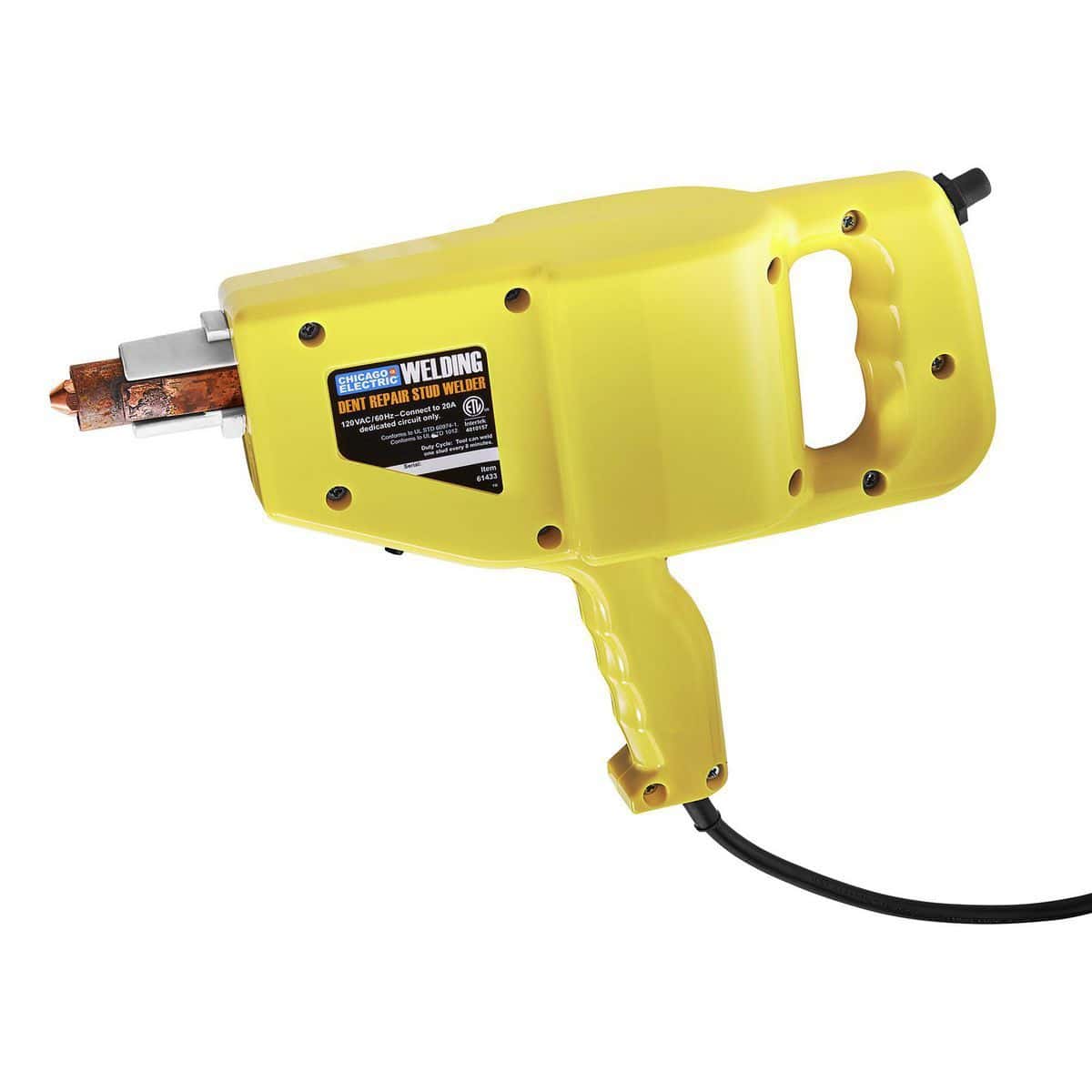A repair spotter is an invaluable tool in the world of auto body repair. This versatile device allows technicians and DIY enthusiasts alike to fix dents without damaging the paint, preserving the factory finish and saving on costly repaints. In this article, we will delve into the fundamentals of repair spotters, explore different types and techniques, and provide essential tips for safe and effective dent removal. Whether you’re a seasoned professional or a novice looking to tackle minor dents, understanding the power of a repair spotter can transform your approach to auto body repair.
Repair Spotter Basics & Advanced Tips
Spotter Fundamentals
A repair spotter, also known as a dent puller or stud welder, is a tool used in auto body repair to fix dents without damaging the paint. It works by welding metal studs to the dented panel, then pulling the studs (and thus the dent) back into place with a slide hammer or specialized pulling tool.
Spotter Types
| Type | Description |
|---|---|
| Single-sided | Welds studs to the exterior of the panel only. Requires drilling access holes in the panel to weld studs from the inside. |
| Double-sided | Welds studs through the panel from the inside. Does not require drilling access holes. |
| Portable | Smaller and lighter, suitable for mobile repairs. |
| Shop-based | Larger and more powerful, designed for stationary use in a repair shop. |
Stud Types
Various stud types exist, each suited for specific dent sizes and shapes. Round studs are versatile for most dents, while specialized studs like triangle or flat designs offer better grip for certain situations.
Repair Spotter Use
- Clean the dented area and surrounding paint.
- Select the appropriate stud type and size.
- Weld the stud to the dent.
- Attach a slide hammer or pulling tool to the stud.
- Gently pull the dent out, working in small increments.
- Remove the stud by twisting or cutting.
- Grind and smooth the weld area.
- Refinish the repaired area if necessary.
Repair Spotter Advantages
- Preserves the factory paint finish, avoiding costly repainting.
- Less invasive than traditional dent repair methods.
- Versatile for different dent sizes and locations.
- Cost-effective for both professionals and DIY enthusiasts.
Safety Tips
- Always wear safety glasses and gloves when operating a repair spotter.
- Use the correct settings for the metal thickness to avoid burning or warping the panel.
- Work in a well-ventilated area to avoid inhaling fumes.
- Practice on scrap metal before attempting repairs on a vehicle.
Beyond the Basics
Advanced repair spotter techniques include “glue pulling,” which uses adhesive tabs instead of welded studs. Additionally, “lever pulling” involves using specialized levers to push dents out from the inside.
By mastering these skills, you can achieve professional-level dent repairs and restore your vehicle’s appearance without breaking the bank.
Understanding Repair Spotters
Repair spotters are essential in various fields, from auto body repair to yard equipment maintenance. Their importance lies in their ability to increase productivity, accuracy, and safety.
Types and Applications
Different types of repair spotters are used based on the task and equipment involved. Electronic spotters use digital cameras to capture images and analyze distortions. This helps in precise panel alignment in auto body repair. Optical spotters project a light beam to create shadows on the panel, aiding in the correction of damages. Yard spotters handle the smooth movement of heavy equipment in warehouses and ports. Each type of spotter serves a specific function to improve efficiency and accuracy in their application areas.
Key Features and Versatility
Repair spotters have several key features that make them versatile tools. They often come with digital displays for real-time feedback and adjustable cables for better maneuverability. Some spotters are designed to be portable, making them suitable for various environments, including outdoor yards and indoor repair shops. They also have safety features like automatic shut-off to prevent accidents. With these features, spotters can handle different tasks, from fixing car panels to maintaining yard equipment. This versatility allows businesses to use them for multiple purposes, increasing productivity and reducing downtime.
Repair Procedures and Considerations
Repairing and maintaining equipment involves different levels of complexity, from simple DIY fixes to more intricate repairs best left to professionals. These two areas are crucial in ensuring the longevity and efficiency of your equipment.
Complex Repairs and Maintenance
Complex repairs often require specialized tools and knowledge. For example, engines and other high-tech parts need precise handling. Yard spotter repairs might involve working on large machines, which demand professional help.
Performing maintenance on such equipment usually involves routine checks and replacements. Using the right accessories and kits makes a big difference. Keeping machinery clean and painted helps in early detection of issues and extends the life of the parts.
When dealing with complex repairs, always refer to a detailed manual. For instance, the TICO Pro-Spotter Repair Manual provides step-by-step guidance. Proper training and safety measures are crucial here as mistakes can be costly.
DIY Repair Tips and Safety
For simpler repairs, DIY repair is a great option. Fixing items at home can save money and give a sense of accomplishment. Websites like Repair Spotter offer guides on various repairs, including appliances and technology.
Before starting any DIY project, gather the right tools and replacement parts. An organized kit can be very helpful. Follow instructions carefully and watch videos if available. Always prioritize safety by wearing protective gear and working in a well-lit space.
It’s important to assess if a DIY repair is within your capability. While simple painting or minor fixes can be done at home, complex electrical or engine repairs might not be safe to handle without professional assistance.
Frequently Asked Questions
A repair spotter helps improve maintenance speed and accuracy. They can find different types of damage and may need special training. Several industries use repair spotters, and they often work with automated systems. Safety is also important when using them.
How does a repair spotter contribute to maintenance efficiency?
Repair spotters quickly identify issues. This helps technicians address problems sooner and save time. It also means less downtime for equipment and better productivity.
What types of damages can repair spotters identify?
Repair spotters can find cracks, leaks, and broken parts. They can also spot wear and tear that might not be visible to the naked eye. This includes internal damages and external damages alike.
Is specialized training required to operate repair spotting equipment?
Yes, operating repair spotting tools usually needs special training. People must know how to handle the equipment safely. They learn how to read the data and make accurate decisions based on what they find.
What industries benefit most from the use of repair spotters?
Industries like manufacturing, aviation, and construction benefit a lot. These sectors use heavy machinery that needs regular checks. The transportation sector also finds repair spotters useful for vehicle maintenance.
Can repair spotters be integrated with automated repair systems?
Yes, many repair spotters can work with automated systems. This helps in quicker and more precise repairs. The integration allows for real-time data and swift action.
What are the safety considerations when using a repair spotter?
Users must follow safety guidelines to avoid accidents. This includes wearing protective gear and working in a safe environment. It’s also important to inspect the repair spotter regularly to ensure it functions correctly.







